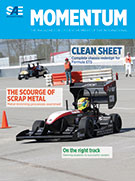Event
Digital Summit - WCX™ World Congress Experience
2024-04-28
If you are not able to attend WCX 2022 in-person, you will have the opportunity to join a selected number of live technical and executive discussions online that will advance your skill set in propulsion, connectivity security and safety as well as the business of technology.





